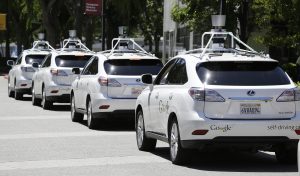 When Google first announced years ago that they were developing—and planning to begin testing—autonomous vehicles, it probably sounded to many people like a bit of science fiction. Sure, self-driving vehicles are not a new idea, but they have probably always seemed such a futuristic concept.
When Google first announced years ago that they were developing—and planning to begin testing—autonomous vehicles, it probably sounded to many people like a bit of science fiction. Sure, self-driving vehicles are not a new idea, but they have probably always seemed such a futuristic concept.
Well, apparently, the future is here and self-driving vehicles are a very real thing: Apple (among other companies) is also in the process of developing prototypes. But before these machines can become commonplace, we need to know they are safe. After all, early tests continue to show that the human element makes it hard for these cars to avoid collisions.
The human element, of course, will always make machine autonomy difficult as human behavior is often unpredictable. Artificial intelligence may be able to deduce mathematical probabilities at lightning speed, but the randomness of human decision making and habit, sometimes, will throw a kink in that line.
Well, in short, no. Early studies show that although self-driving cars can reduce passenger risk during, and even avoid collision with, another vehicle, autonomous vehicles still pose risk to pedestrians. This is why Google has pursued—and recently received a patent for—a special kind of adhesive coating the company wants to apply to the exterior of these vehicles which will glue a pedestrian to the vehicle as it responds to a collision, instead of colliding with them and sending them flying.
It sounds a bit silly—and in some ways it certainly is—but sometimes a practical solution seems silly because we—as humans with complex brains—often believe that the solution to a complex problem must also be complex. The simple solution, of course, would be to develop a system of cameras and sensors combined with software that can predict—and avoid—these types of collisions. But, the company says, “while such systems are being developed, it must be acknowledged that, on occasion, collisions between a vehicle and a pedestrian still occur.”
Similarly, while the idea is silly, Google also reminds “Prospective product announcements should not necessarily be inferred from our patents,” suggesting that this idea is merely the beginning of something far bigger—not a new process for Google.
